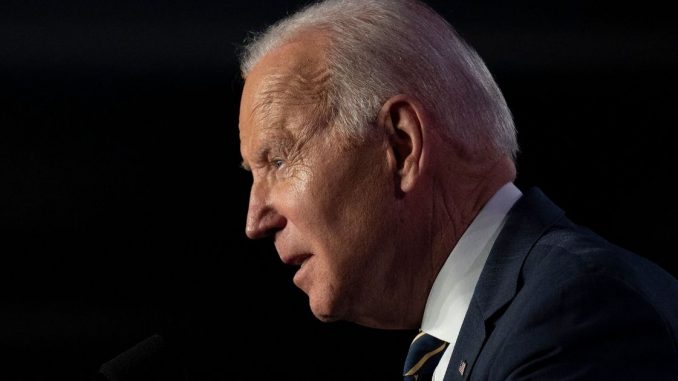
The Biden administration wants it both ways: The U.S. is pumping more oil than ever, it says, and greedy old oil companies could pump more but they won’t.
So you can’t blame us for high energy costs, President Joe Biden and his team say.
Except in their efforts to talk out of both sides of their mouth, they can’t even get their propaganda right.
Witness a tweet from the White House account on Thursday about natural gas production.
U.S. natural gas production is at a record high. In fact, the U.S. was a net exporter of petroleum and petroleum products in each of the last two years, and will be a net exporter of natural gas for years to come. pic.twitter.com/T0q5Z1Egr2
— The White House (@WhiteHouse) March 10, 2022
And the critical response to it.
Your chart ends at 2020. I see a huge increase from 2016 until 2020. Who was president? https://t.co/7faAVBI6qC
— Jason D. Meister 🇺🇸 (@jason_meister) March 10, 2022
The Biden administration boasted of high gas production and drastically lowered dependence on imports through — when?
Through 2020.
And who was president at that time? Exactly — Donald J. Trump, who made it a concerted goal to achieve energy independence. Which he did in a very short time.
Biden, of course, barely had pictures of his family set up on his desk in the Oval Office when he more than symbolically declared war on fossil fuels by canceling the Keystone XL Pipeline (putting perhaps 11,000 people out of work at the same time) and issuing an executive order that halted new oil and gas leases on public lands.
Yet Biden says it’s not his fault gas pumps have become one-armed robbers worse than slot machines.
“It’s simply not true that my administration or policies are holding back domestic energy production,” Biden said Tuesday. “That’s simply not true.”
Not true? The oil industry has a different view.
Federal agencies under Biden “have introduced significant uncertainty that will negatively impact American energy investments,” Mike Sommers, president and CEO of the American Petroleum Institute, wrote to Secretary of Energy Jennifer Granholm on Feb. 28.
Four days earlier, in a separate letter to Secretary of the Interior Deb Haaland, Sommers criticized “unwarranted delays in federal ‘permitting and leasing’ of American energy.”
In his letter to Granholm, he chided the administration for calling for increased oil supplies from the Organization of the Petroleum Exporting Countries, a Federal Trade Commission investigation of energy markets and a short-term suspension of gasoline taxes.
“These are short-term, and even counterproductive policy measures that will have little meaningful or enduring impact,” Sommers wrote.
Even though Biden and White House press secretary Jan Psaki have said oil companies are sitting on and taking no action on oil leases, things aren’t that simple.
Even with a permit, it takes a lot to get an oil well in production.
“Producers also have to put a drilling plan together, secure rights of way and work with state and private landowners,” said Jennifer Pett of the Independent Petroleum Association of America, according to PolitiFact.
The left-leaning “fact-checker,” which often misses the mark, wrote about the financial reluctance of oil companies to drill, tying into Psaki’s image of greedy capitalists.
“Sometimes there might not really even be producible oil and gas on a lease,” said Hugh Daigle, an associate professor at the University of Texas’ Hildebrand Department of Petroleum and Geosystems Engineering, according to PolitiFact.
“Companies sometimes hold leases as a bit of a mind game with their competitors, or even just because they didn’t properly assess the production potential prior to leasing due to lack of data or that sort of thing,” Daigle said.
There’s also a change in oil company strategy, Raymond James analyst Pavel Molchanov told CNN Business.
“Oil and gas companies do not want to drill more,” Molchanov said.
“They are under pressure from the financial community to pay more dividends, to do more share buybacks instead of the proverbial ‘drill baby drill,’ which is the way they would have done things 10 years ago,” he said. “Corporate strategy has fundamentally changed.”
Further complications come from the pandemic-related lockdowns, which reduced demand for energy. As a result, the industry shed workers and is having supply chain problems in securing pipe and sand for fracking.
“They can’t find people, and can’t find equipment,” said Robert McNally, president of consulting firm Rapidan Energy Group. “It’s not like they’re available at a premium price. They’re just not available,” he told CNN Business.
Volatile oil prices create a boom-or-bust environment for the oil industry — low prices (sometimes strategically driven by OPEC) cap American wells, drive oil patch workers to other industries and make it difficult to restore domestic oil production.
Biden has claimed oil production in his first year has exceeded that of Trump’s first year.
The data indicate that is true, but Biden’s first year — as the tweeted gas production chart indicates — apparently has been cruising on the remaining energy successes of the Trump administration.
While there was increased gas production in the Obama years, Trump did not have the headstart bestowed on Biden.
In addition to government intervention during COVID disrupting most everything, letters to the administration from the petroleum industry indicate things were better when energy companies were allowed to advance American independence.
As even the Biden administration’s tweeted chart on natural gas production demonstrates.
